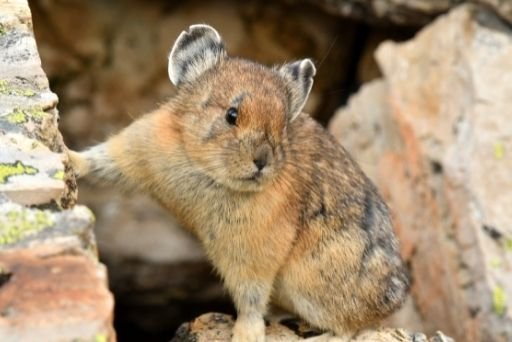Let’s discover Pika: The little teddy bear of the mountains
Pikas belong to the Ochotonidae family. Currently, more than 20 species are recognized in the genus Ochotona. They are native to southeastern Russia. Siberia and the Himalayas. Some species also live in North America. Today, we bring you all the information you need to know about a very small mammal, sometimes known as Pika and, in other cultures, baptized as a whistling hare. What is the reason for this peculiar characteristic of whistling? In the following post, we answer this question and many more.
It is said that hairy creatures with the face of a teddy bear have been seen a few times in the high Rocky Mountains and green meadows in Tianshan, northwest China. These fascinating animals hide among the rocks and make a whistling sound that they may use to attract companions. For this reason, they are known as whistling hares.

Pikas are small mammals that live in the . They are included in the genus Ochotona, a group of lagomorph mammals of the family Ochotonidae. These beautiful animals have the appearance of a small mouse and a rabbit, due to their dexterous and fast movement.
The particular squeak it makes from time to time is what gives the animal its nickname of whistling hare. It can be found in some areas of Asia and in Europe. There is only one species these regions. Several other species are found in North America.
Let’s see why whistling hares are neither mice nor rabbits, but an animal halfway between both worlds. Here are some of their characteristics:
- If the Pika feels threatened at any time, it hides in its burrow and waits until it feels safe. In the winter seasons, the whistling hare takes advantage of its ability to move easily through the mountains to take shelter under rocks, thus protecting itself from the low temperatures.
- Pikas live mostly in mountainous areas of cold climate, with abundant rocks, although some species also frequent residents of more bare areas, even wooded areas. They are sociable animals that live in community. The group collaborates in the tasks of food gathering and vigilance against their main predators: carnivorous mammals and birds of prey. Nevertheless, species of different groups can present aggressiveness for territories.

- Pikas are diurnal, although they are more active at dawn and dusk. It forages for grasses, seeds, weeds, thistles and berries during daylight hours.
- Pikas are herbivorous animals and therefore the pika has a vegetation-based diet. They feed on dry vegetables, leaves of bushes, herbs, seeds, etc. They usually store food in their own burrows, so they have enough food to feed themselves in winter, although they do not hibernate, they are less active.
- There is no sexual dimorphism: the mating system is variable according to the species of pika. In fact, there are monogamous specimens, although there are also polygamous ones. Gestation lasts approximately 30 days and they give birth to two to five offspring.
- Pikas range in size from 12 to 30 centimeters, weighing 100 to 300 grams. They have a soft and abundant fur with different colors – depending on the species. Their ears are round and so are their eyes. These animals have a face with a short, narrow muzzle and a mouth similar to that of a mouse.
- Although the pika inhabits regions where there are few animals, they have several predators mainly due to its small size. Pikas prefer colder climates and are generally found in mountainous regions and rocky areas where there tend to be fewer predators.
- There are more than 30 different species of pika that vary in color and size, across Asia, North America and parts of Europe.

- They emit a special whistling sound, hence their common name of whistling hares. Their fur is abundant and very soft with different shades of color, brown or reddish, depending on the species.
- Pikas defend their territory by whistling at each other, and their large, rounded ears are useful for listening to the calls of rival pikas.
This is everything you need to know about pikas. They are incredibly intelligent and live in small groups. Pikas are hardworking animals that spend most of their day looking for food and shelter.





